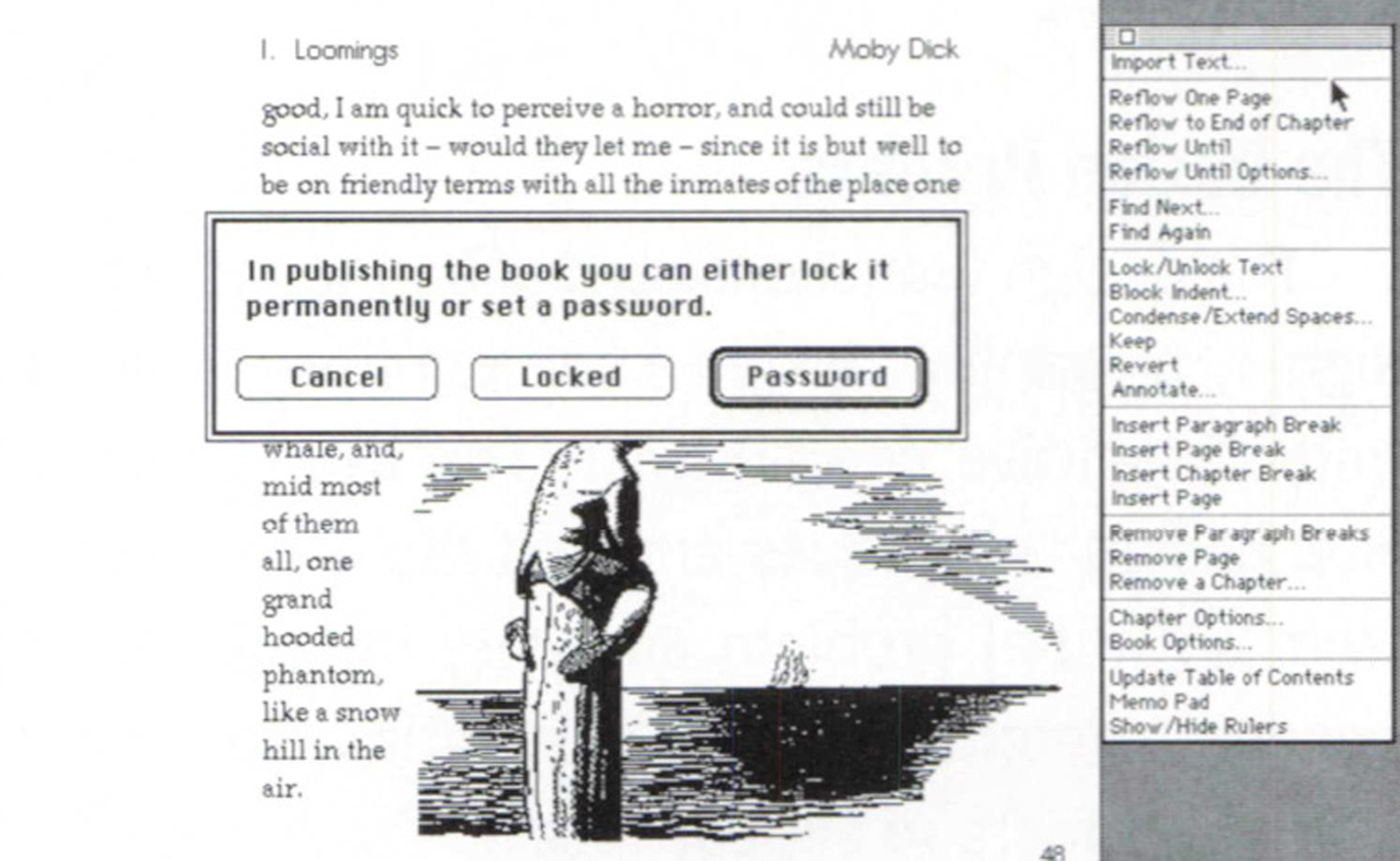“A Brief History of the Expanded Book Toolkit” by Stein
Conference:
- SIGGRAPH 1993
-
More from SIGGRAPH 1993:


Type(s):
Entry Number: 16
Title:
- A Brief History of the Expanded Book Toolkit
Program Title:
- Designing Technology
Presenter(s):
Collaborator(s):
Project Affiliation:
- The Voyager Company
Description:
A Brief History of Expanded Books
On June 16, 1990, a small conference was heldat The Voyager Company’s Santa Monica office. It brought Iiterary theorists and scholars together with programmers and designers to explore what computer technology could bring to the reading experience. After a day-long conversation the participants generally agreed that simple paper books represented a remarkably compact and efficient technology: they were portable, easy to use, convenient and cheap. Computers were none of these. All in attendance agreed that until affordable, powerful, and simple handheld reading devices appeared on the market, computer-based text could not become a practical alternative to paper, judged to be at least five years away.
About nine months later, Voyager received a prototype of Apple Computer’s Macintosh PowerBook. Within hours one employee had put a few pages of a novel onto it. It looked … like a book. Designers from Voyager’s art department and programmers and producers began to discuss how a book should look and act on the computer screen. By the summer of 1991, the Expanded Books project was in full swing. The object was to design and produce a line of books for reading on the PowerBook. Three books were chosen for this first attempt: a contemporary thriller, a cult favorite, and a literary classic. Rather than provide an extensive (and expensive) multimedia experience, the books were meant to exemplify the standard features computer based books should have. The design team for this project was fluid and ad-hoc; it included a staff programmer, a text specialist, a programmer/writer, and a visitor from Apple UK’s technical support staff (who later joined the company). Graphic designers were frequently consulted on issues of typography, layout, and visual interface issues. Almost everyone who visited the company during this period was corralled and shown prototypes of the evolving books, and then asked to comment.
In January of 1992, the first three books were released and the next stage of the project began: to produce computer-based books at the rate of three per month. This posed new design challenges, for the improvised software tools that were used to develop the first books were not suited to the demands of a regular production schedule. Voyager assembled a design team consisting of members of the original book development group along with members of the new book production staff. Their goal was conceptually simple: to create a toolkit that would automate much of the process of creating the books and that was easy for non-computer specialists to learn to use quickly and effectively.
Again, the loose organizational structure at Voyager led to rapid and innovative development. Book production team members could quickly try out and criticize the newly developed tools, leading to many changes and improvements. The programming team could watch how the tools were used in an actual production environment and adjust the toolkit’s feature set. Documentation was written and laid out in camera-ready form by one of the development team’s members in parallel with the development work, allowing the toolkit’s feature set to remain fluid until very late in the product development cycle. Continual discussions between the developers and Voyager employees working on other projects, along with Voyager’s ongoing practice of demonstrating works-in-progress to visitors, contributed to the design and implementation as well. As a result, it took less than five months from inception of the Expanded Book Toolkit project to its commercial introduction at the Boston MacWorld Expo in August of 1992.




